When you get stung by a jellyfish, you’ve just been harpooned by a projectile that was fired with an acceleration of 5.4 million G’s.
Admit it, you didn’t know that.
For years, jellyfish have been one of my favorite mind-blowing organisms, but two things in the last two days prodded me to finally write an article about them. One was our good friend Dave. Dave lives on the shore of a beautiful Caribbean lagoon in Mexico (and so do we—we rent a casita from him), and he has noticed that lately there are a lot more jellyfish than usual in the lagoon. He loves the lagoon and is always keeping an eye on it, and he is afraid something is amiss, so he asked me if I could look into it. Then one day later Susan got an email from another dear friend of ours, Cathleen, back in Monterey, who tells us that millions of small surface jellyfish called velellas had washed up on the beach there in the last few days.
So okay, it’s time to do this thing.
Jellyfish (phylum Cnidaria) are as remarkable for what they are not as for what they are. Listen to what your basic jellyfish does not have: He does not have a brain. He does not have a heart or a circulatory system. He does not have lungs or gills. He does not have eyes. He does not have a skeleton. And he might be a she, because he does have a gender.
He only has a single muscle around the perimeter of the bell. He only has a single orifice, called a mouth-anus, and a single gastro-intestinal organ behind it, which is stomach and intestine combined, and does all the digesting before he spits out the remains. The closest thing he has to a nervous system is called a neural net, which can be pictured as a non-centralized web of neurons sort of draped over the bell. When you poke him, each neuron fires to its neighbor, in an “I just felt something, pass it on!” sort of way, and somehow he ends up responding and pulsing away in the other direction.
In fact, even what he does have, he does not have very much of, because he is 98% water, and that’s a very cute trick—only two percent of him is anything he has to find or pay for. It’s a very cheap way to be an organism. The Jell-o in your refrigerator is 90% water, so jellyfish have the process dialed in a lot better than the Kraft Foods corporation does. As for us, we’re about 55 to 60 percent water, so we’re pretty high-maint. It takes a lot of nutrients and expensive chemicals to make a human being. (At today’s prices, you’re worth about $160.00.)
They’re able to pulse around, but that’s as much to draw prey into their tentacles (actually called oral arms) as anything else. The reason they don’t have to obsess too much about locomotion is that they’re planktonic. Most people don’t realize this, but you don’t have to be small to be plankton—it just means that you go where the currents do, and that’s what jellyfish do. In all, jellyfish seem to have been designed by an engineer who was over-obsessed with the cheap-and-simple design model, and they seem merely fun, just a weird and amusing creature—until you get to the sub-cellular level. That’s where jellyfish go from being amusing to being amazing.
So think about this for a moment: You’re ninety-eight percent water. Even a soft, pudgy human finger can poke right through you. You’ve got no speed, no hardened exterior, no teeth or claws—and what do you decide to go around killing and eating for a living? Bony fishes, fer God’s sake! How do you subdue something like a fish, which has a skeleton, scales, fins, spines, teeth, thrashing muscles and an intense desire not to be killed?
With toxins, that’s how. You poison them. And now I want to talk about dish gloves.
When you get stung by a jellyfish, you have been harpooned by thousands of tiny projectiles on the ends of flexible hollow tubes, fired from cells called nematocysts. The nematocysts cover the oral arms that hang down curtain-like from the bell, and the way those things fire is just amazing. Picture taking a dish glove, and poking one finger of it inside-out into the glove. Now put the opening of the glove over your mouth and blow into it. The finger everts—it shoots outward until it’s fully extended and right-side-out again. That’s how those nematocysts fire. What’s absolutely brilliant about that design is that there is no drag. None. This thing is not travelling through the water, it is growing through the water. Its surface is not moving at all relative to the water, so it can fire at tremendous speed, and without veering off due to turbulence. Sticking with the dish glove analogy for one more moment, if that thing were the diameter of a dish glove finger, it would be the length of a football field. And it fires all that distance through water, and in a straight line.
And with up to 5.4 million G’s of acceleration. They’re still studying it, but that seems to be the upper estimate. To give that number some meaning, you have to browse down a chart of sample G-force numbers, which is an extremely fun thing to do (okay, maybe I’m a little weird, but I call it a good time). When the Space Shuttle takes off it never gets above three G’s. The top recorded drag racer managed to hit 4.3. Aerobatic planes can deliver 4.5 to 7 G’s. Twenty-five G’s and up is a number that will usually kill you. Your average bullet fires at 100 to 200 G’s. It is thought that a guy named David Purley experienced the highest G load of any human being without dying. He was a Formula One race car driver. On one particularly bad day he went from 108 miles per hour to zero in twenty-six inches. He actually was a very courageous guy—he once abandoned his own race to try to save a driver trapped under a burning car. Later he went into aerobatic flying and died in a plane crash, but anyway, you don’t usually get into the thousands or millions of G’s until you’re talking about either sub-atomic particles in accelerators, or jellyfish.

-
David Purley
Photo by Gillfoto CC BY-SA 3.0, via Wikimedia Commons
And would you like to know what force it is that instantly creates this tiny but incredible, millions-of-G’s explosion? Osmosis, that’s what.
This blew me away (so to speak). I had always thought of osmosis as a lazy, slow kind of a force that given time will equalize concentrations on opposite sides of a permeable membrane. Not so—apparently it can be both very powerful, and very instantaneous. The bulb or capsule (called a cnida) into which that dish glove finger is tucked is filled with a solution rich in suspended calcium, but it’s safely imprisoned behind waterproof walls. What happens when the trigger is pulled got a little technical for me and changed from article to article, but if I understand it correctly, a change in electrical polarity causes a membrane to instantly go from impermeable to permeable, and suddenly all that calcium-rich fluid is exposed to surrounding normal fluids, and the osmotic reaction is absolutely explosive. Water rushes into the bulb at lightning speed, briefly creating 140 atmospheres of pressure, and the nematocyst blows, in what one scientist calls “the most explosive envenomation process that is presently known to humans.”
The harpoon tip is also designed to rotate as it travels, like a bullet fired from a rifled barrel, and I’m assuming that that also helps to keep it straight. And, of course, the whole tube (and bulb) is full of venom. When it finally reaches its full length, which is usually after it’s thoroughly buried in your flesh, there is still pressure left in the bulb, so the harpoon tip blows off the end of it, and all that venom empties into your system. Cute, no?
The trigger that gets pulled is interesting too. There are actually at least two. One is mechanical and simply gets depressed by the prey like the trigger on a gun (called a mechanoreceptor). But to keep these valuable nematocysts from firing on wharf pilings and other objects that cannot be eaten, there is also a chemosensor—basically an olfactory—which has to detect something organic like animal protein before the system will arm itself. There are some species of box jellyfish (class Cubozoa) in Australian waters that are among the most venomous creatures in the world and can kill you outright, and have enough venom on board to kill sixty others like you, but the only thing you need to protect yourself from them is pantyhose. That’s what the Aussie lifeguards used to wear before there was such a thing as a Lycra bodysuit. The nematocysts are plenty long enough to fire through the fabric, but the chemosensor is a tiny thing and cannot reach through the fabric to detect skin, so nothing fires.
* * * *
Well, I could keep going, believe me there’s more, but I should wrap up, and circle back around to what Cathleen and Dave have each been seeing.
Cathleen, those deep blue little surface jellyfish you’ve been seeing washed up in the millions on the beaches of Monterey are commonly called by-the-wind sailors, and their latin name is Velella velella, the only species of their genus. They are cnidarians, but they’re pretty different from the typical jelly I’ve been describing here. They’re more related to the Portugese man-of-war, and, like the man-of-war, they’re colonial—there’s more than one cnidarian at work there. They’re an interesting animal. They live entirely on the surface, floating on gas-filled chambers like a Zodiac raft, and with little transparent, leaf-shaped sails sticking up. The velellas are longer than they are wide, and their sail sticks straight up, but it is mounted diagonally, set at forty degrees off the longitudinal axis of the creature. This allows them to sail in a direction up to sixty-three degrees off the downwind direction, which is a level of control that pushes the limits of what we call planktonic. Wind is usually light at this time of year, but when there is a weather anomaly and the wind gets stronger, millions of them will strand on beaches up and down North America (these things exist in all the world’s waters, and from sub-arctic to tropical latitudes). Here’s the fun part: When that happens, as it is now, and you’re looking at foot-thick windrows of decomposing velellas on the beach, you would think this has been an absolute disaster for the poor species, but there’s a catch. Velellas have an isomorphic form, and half of them have sails that are angled forty degrees the other way. I kid you not. That half of the velella population is still out at sea right now having a good time.
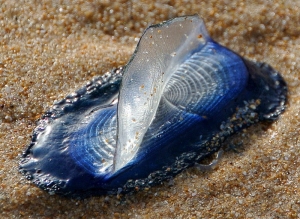
-
Velella, aka By-the-wind Sailor
By Wilson44691 [CC0], via Wikimedia Commons
Dave, the question you ask is more complicated, and you, like Cathleen, are also looking at a delightfully non-typical jellyfish. It is commonly called the upside-down jellyfish, or the mangrove jellyfish, but there are several species, so yesterday I took a dive and looked at one of them myself, and if I’ve ID’d it correctly it’s Cassiopea andromeda (there must have been an astronomer in the room with the taxonomists). I remember there being a tank of these in an exhibit when I was a docent at the Monterey Bay Aquarium, and looking at them, lying there on the tank bottom, upside-down on their bells and pulsing with their oral arms waving in the water, and wondering, “Where in the hell did they find those things?” Now they’re 200 feet from where I’m sitting. They can pulse around like any other jellyfish, but then they’ll turn upside-down and settle on the floor of a shallow lagoon with their oral arms sticking up, looking for all the world like a sea anemone, which is also a cnidarian, just built upside-down. (In fact, sometimes a sea anemone is a jellyfish, just in a different life stage, but that will have to wait for another article.)
They lie there like that because they are photosynthesizing. They’ve taken a cue from the coral around them, and just like the coral they have a symbiotic relationship with a photosynthesizing algae called zooxanthellae, and it does most of the nourishing for the creature, though the jellyfish still kills and eats small plankton and other prey.
To get to your question, several things can cause a surge in jellyfish numbers, which is commonly referred to as a jellyfish bloom. One is runoff. Nitrates and other pollutants and nutrients, like sewage or agricultural runoff, cause something called eutrophication, in which the unusual flood of nutrients causes an intense algae bloom and the algae suck up all the oxygen, creating oxygen-poor “dead zones,” and jellyfish are much better able to handle low oxygen than the bony fishes with whom they compete for a lot of their food. Jellyfish are more able to handle acidity in the ocean waters than other organisms (though no one is sure why). Coastal and off-shore construction of things like pilings and drilling platforms create more attaching surfaces for jellyfish in their polyp, or anemone-like, stage. Jellyfish reproduction is accelerated by warmer waters. And because of the competition for prey between jellyfish and bony fish, pretty much anything bad you do to your fish populations will create more jellyfish. Jellyfish also have a multi-stage reproductive cycle that includes some non-sexual cloning, so they have a fallback process that allows them to continue to reproduce while they wait for their numbers to rebound enough to find mates. To understand the broad strokes of what’s going on, remember how simple jellyfish have kept themselves. Animals like bony fishes, with high metabolisms, complex organs, and high oxygen and energy demands, simply find it hard to compete with jellyfish when things change, or times get tough. In other words, when human beings start screwing with the planet.
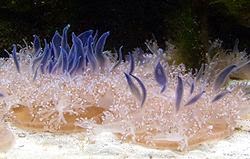
Upside-down Jellyfish (Cassiopea andromeda)
Photo © Raimond Spekking, CC BY-SA 4.0 (via Wikimedia Commons)
There is huge argument right now about jellyfish blooms. Some see an extremely scary global trend. There is a jellyfish in the waters between Japan and China that measures six and seven feet across the bell and weighs 480 pounds, and its blooms have become annual. One fishing trawler capsized itself trying to haul in its nets, and the crew had to be rescued. People are blaming pollution from the Yellow River in China. Last year, nuclear power plants in Scotland, Japan, Israel and Florida had to shut down due to jellyfish clogging the inlet pipes of the cooling system. Ireland’s entire salmon farming industry got destroyed one year by jellyfish. Desalination plants have also had to shut down.
But the problem is, all this shouting and arm-waving is anecdotal. Booms and busts in nature happen all the time, and we actually know very little about jellyfish. Jellyfish are notoriously hard to study. You can’t tag one. They blow into town and then blow out and nobody knows where they go. Haul one onboard and you have a pile of slime. Put them in any ordinary fish tank and they all end up piled in one corner, or sucked up against the filter inlet. We don’t know jack scat (that’s a euphemism I just made up) about jellyfish, and we need to. People have been quick to implicate global warming, but Steven Haddock of the Monterey Bay Aquarium Reseach Institute believes that there are many other possible causes that would come before that. “It sounds to me like scary rhetoric to try to get funding,” he says. Rob Condon of Dauphin Island Sea Lab in Alabama has been gathering data going back to the 1700’s, and believes that there is nothing suggesting a global catastrophe. He points out that four thousand years ago in Crete, they were painting pictures on their pottery about jellyfish blooms.
So, like so many things I write about, we don’t really know. And we need to. But what haunts me about the overarching trajectory of this story is a fairly simple truth that is apparent to me no matter which papers I read or which way I turn them, and it goes something like this: Anything bad we do to our fish populations, or our oceans in general, is likely to create jellyfish blooms.
I don’t have a good feeling about this.
Now you–
Well, no, I guess you don’t.

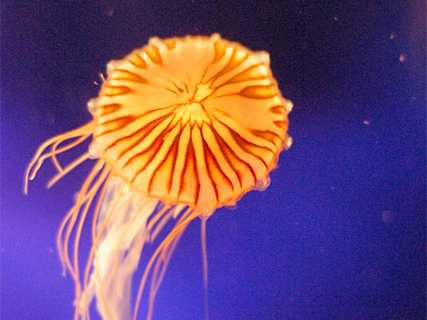
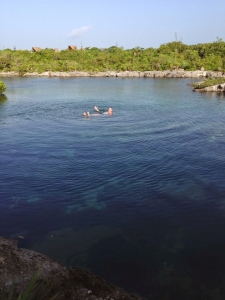
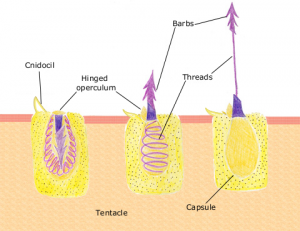
Randy:
Being the skeptic that I am I find it hard to believe 5.4 Mega G’s. I did find the article, their math is correct. I’d like to see how they arrived at their distances and times.
I also checked on bullets, they are closer to 25,000 to 150,000 g’s depending on bullet speed and muzzle velocity.
Nik.
Ha! I don’t think you’d feel very much at all!
Very informative arcitle, Randy!
Still trying to guess what 5+million G feels like 🙂
Thanks, Tom! I think that it might be the engineer in me that is so impressed with evolution’s innovations. That whole 98% water thing is so brilliant on so many levels! And man, it sure created challenges to crawl out of the sea and not be weightless anymore!
Very interesting article. Now I understand the jellyfish stings I got at Virginia beach about 30 years ago. As I remember at the time, the lifeguard told me to rinse it with salt water as plain water would upset the salt balance around the sting area releasing more venom. Being an engineer I found the fact that they were 98% water pretty neat, basically they are in a weightless atmosphere. Like being one with your surroundings. Thanks Randy.
Thanks, Marty and Byron!
I just got an email from a friend who is a docent at the Monterey Bay Aquarium, and she attached docent update newsletter. The science on velellas has already changed! They’ve decided they’re not colonial after all! Sometimes I miss working there and knowing all the latest before it even gets published!
I’ll second Byron’s comments. And, while I’m tempted to say, Randy, you are “the Man”, I am compelled to say, Randy you are “the Ranger”.
Wow!
Another great piece, Randy…I’ve learned quite a bit reading this, and I commend you on the conscientious separation of confirmed fact and conjecture.
Well done!